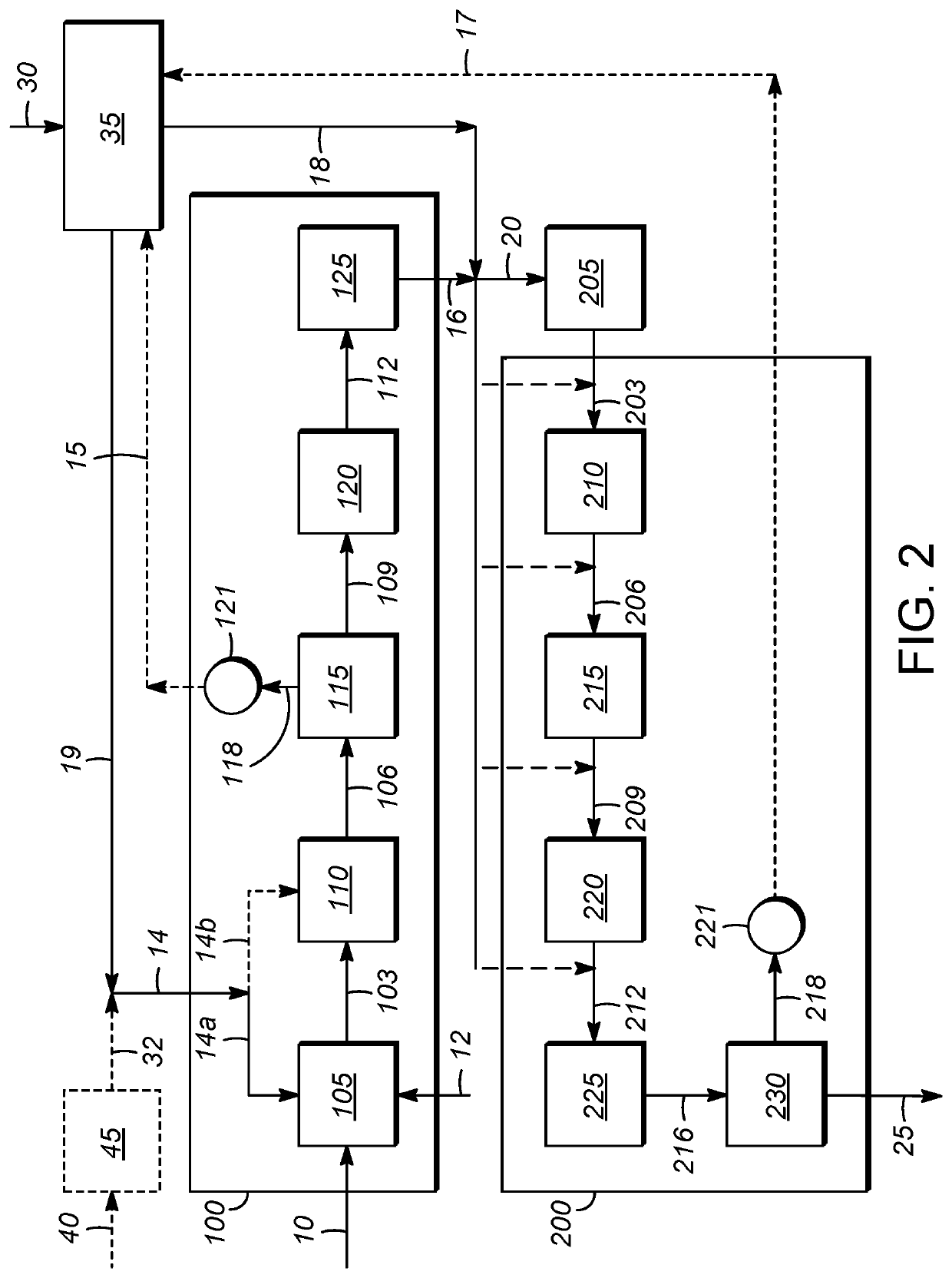Integrated gasification and electrolysis process
a gasification process and electrolysis technology, applied in the field of gasification processes, can solve the problems of high capital and operating costs of typical asu, inability to readily utilize or monetize nitrogen, and high production cost, so as to improve the utilization of carbon, reduce the overall carbon footprint, and improve the efficiencies of feed managemen
- Summary
- Abstract
- Description
- Claims
- Application Information
AI Technical Summary
Benefits of technology
Problems solved by technology
Method used
Image
Examples
Embodiment Construction
[0017]The expressions “wt-%” and “mol-%,” are used herein to designate weight percentages and molar percentages, respectively. The expressions “wt-ppm” and “mol-ppm” designate weight and molar parts per million, respectively. For ideal gases, “mol-%” and “mol-ppm” are equal to percentages by volume and parts per million by volume, respectively.
[0018]Embodiments of the invention are directed to a process for producing methane from a carbonaceous feed by gasification and methanation, performed in a gasifier and methanation reactor, respectively, in which a source of makeup hydrogen is added to the process to improve the overall utilization of carbon in the carbonaceous feed in producing methane (i.e., to improve methane yield, based on the feed carbon content). If the source of makeup hydrogen is obtained from the electrolysis of water, then advantageously this reactant, as opposed to hydrogen generated from the steam reforming of fossil hydrocarbons, is a carbon-free resource that do...
PUM
| Property | Measurement | Unit |
|---|---|---|
| yield | aaaaa | aaaaa |
| yield | aaaaa | aaaaa |
| yield | aaaaa | aaaaa |
Abstract
Description
Claims
Application Information
 Login to View More
Login to View More - R&D
- Intellectual Property
- Life Sciences
- Materials
- Tech Scout
- Unparalleled Data Quality
- Higher Quality Content
- 60% Fewer Hallucinations
Browse by: Latest US Patents, China's latest patents, Technical Efficacy Thesaurus, Application Domain, Technology Topic, Popular Technical Reports.
© 2025 PatSnap. All rights reserved.Legal|Privacy policy|Modern Slavery Act Transparency Statement|Sitemap|About US| Contact US: help@patsnap.com


